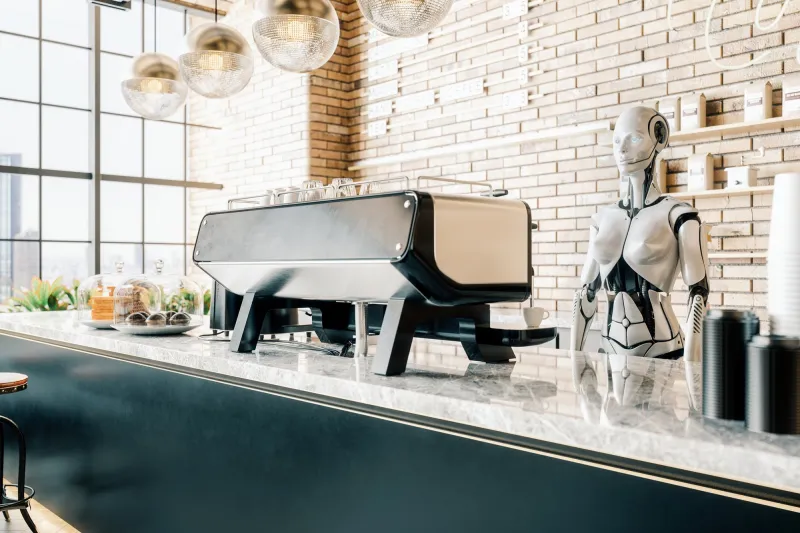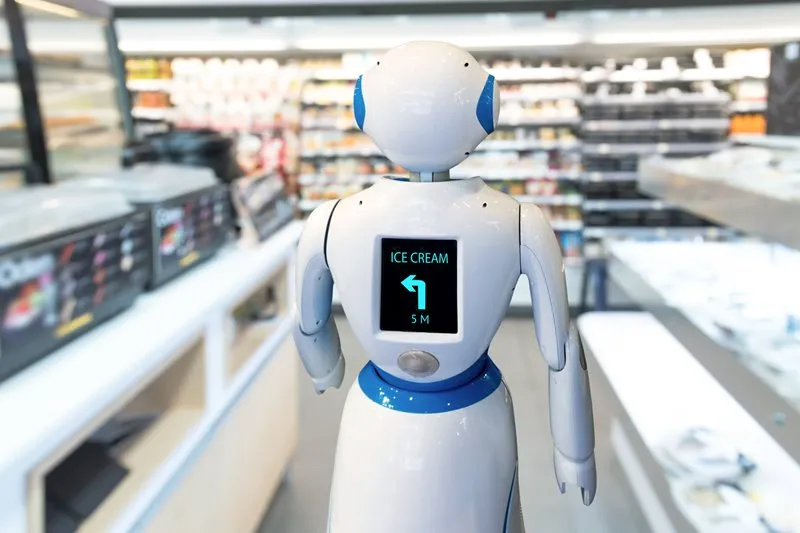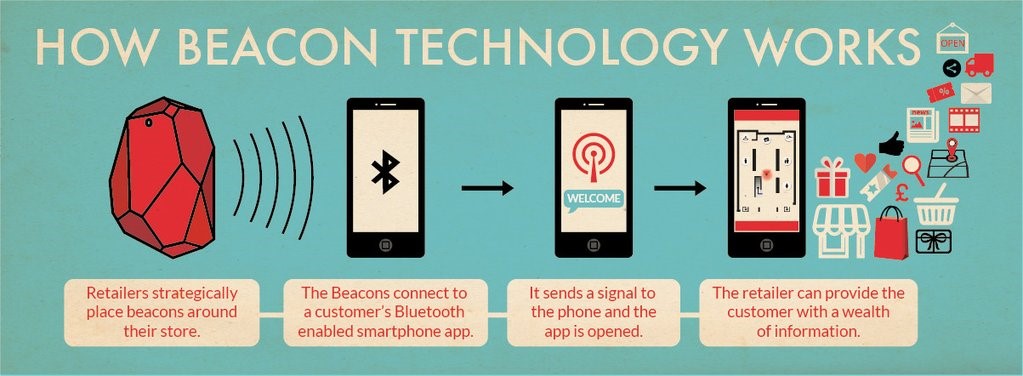


The Retail Tech Trends To Watch In 2021

As 2020 comes to a welcome end, it’s safe to say that this year hasn’t gone to plan. That’s especially true if you are in the retail business, with the recent demise of Debenhams and the Arcadia Group bringing this into stark contrast. Traditional bricks and mortar stores have faced a complete change in how they are able to do business, with the pandemic accelerating a surge towards digital commerce by consumers and moving stores and experiences online wherever possible.
While brands were already wrestling with how to combine their online and offline offering, this necessity has fuelled a mini revolution in retail, a shift in behaviour that will be hard to reverse. So, as we look ahead to 2021, it’s time to examine the retail technology trends heading our way, explore those retail brands already taking advantage of them, and consider how technology can help traditional retail fight back.

Beacons, video and behavioural data
Any retailer worth its salt should be looking for new ways to generate data from customer behaviour. Traditionally, once a customer enters a shop there was little to be done to understand their behaviour and buying patterns apart from looking at their purchase history. This is in contrast with online retail where the customer’s every movement is tracked, analysed and used to personalise their experience. To be able to compete with the algorithms that define the online shopping experience, traditional retail outlets need to generate data.
Beacons are one way of bridging physical and online experiences. Small wireless devices that transmit a continuous radio signal which can be detected by smart phones. This connection can be used in two ways. The first is to push targeted content to the user. Perhaps you are near a product on sale or walking past your favourite shop? The beacon would identify you and push a message alert to your smart device (if you have opted in of course).
Secondly, as the beacons can identify the customer’s exact location, the data they collect is hugely valuable to store owners looking to see customer movement around a store. In a beauty shop you could see which types of products were most popular physically, then cross reference that against sales to see what the actual in-shop conversion rate was.
Another method for collecting data on in-shop user behaviour is via video analytics. Unlike with beacons, this is a passive technique which does not directly interact with the customer. Cameras monitor key areas of the shop and can analyse the video content in real time to detect customers and their behaviour. This method can also be used to detect other events such as spillages and stock levels. Amazon successfully used a camera-based system in its physical stores to remove the need for payment, products customers had chosen were automatically detected and added to their Amazon account.
Facial Recognition.
Retail brands are no longer content to identify customers via the swipe of a loyalty card at the checkout. They want to identify them as soon as they enter the store. Mobile phone technology has helped to normalise facial recognition, but it continues to be controversial due to privacy concerns of people who aren’t happy to be scanned and don’t have the ability to opt out from having their faces scanned and personal data stored.
The technology, which uses over 16,000 reference points on your face, was originally designed to support security at events and international airports. More recently with the development of publicly available services such as Microsoft’s Face API, this technology has been available for anyone to easily build into their applications. Brands who are adopting this tech aim to provide a customised customer experience, as well as collecting valuable data on customer behaviour and demographic as well as the customer’s mood. For example, by measuring the emotion of its customers, retailers are now able to tell if their customers are leaving the shop happier than when they arrived!
Not only can recognition technology identify and classify customers, it can help brands optimise and plan their product offerings. By tracking the movement of people around a store, including where they stop and where they don’t, brands can adjust the layout or reposition stock. Making small, data-driven changes like these can make a store easier to navigate for shoppers, while brands can be boosted by making the most of high-traffic areas.
More controversially, facial recognition can be used to identify suspected criminals, alerting the store security team to people who match a central database of known shoplifters or organised gang members. This clearly needs to be used with extreme caution as identifying the wrong customers and accusing them of a crime would be a potential PR disaster. Although the technology is reliable when used on a mobile phone when the user’s face is close, its yet to be proven if it can effectively be used as mass surveillance with the required accuracy.
Robot assistants
Moving from a potential dystopian nightmare to something a little more friendly: the rise of the helpful in-store robot to assist customers in finding what they are looking for, finding out prices, or connecting them to a human assistant for further help.
“Hello, I am Shopbot, what are you looking for today?”
Robot assistant technology already exists and can greet customers in multiple languages. With built-in 3D scanners with artificial intelligence image recognition software to identify items and navigate the store, these assistants could help guide you to the product, or simply look up product details such as price, or ingredient information. They could even provide augmented reality try-on technology (more about this a little later).
If a customer question is beyond the ability of the robot it can start a video conference with a human to offer a fully capable customer service. These robots are intelligent enough to navigate existing shops and move around customers and the data they gather can be compiled and analysed to provide store improvement recommendations. Most robot designs try to avoid The Uncanny Valley problem: when a robot resembles a person in some ways, but is still not convincing. When this occurs, the audience is disinclined to engage with the robot. Successful robot assistant design then is clearly important, with most opting for a screen on wheels type design rather than anything anthropomorphic.
It’s likely we will see this type of technology in a supermarket environment soon. Supermarkets have already pioneered the automation of many aspects of shopping, from moving away from traditional checkouts in favour of self-scan, through to online shopping technology. Could we see a supermarket in the future where there are no customer facing staff? It certainly seems to be heading that way.
Smart Mirrors & Try-on Tech
With the pressure on traditional retail brands to operate in a COVID-compliant way, many have closed their changing rooms and asked that customers don’t try on clothes or sample products like makeup. For many people this can be off putting, not being able to try on clothes means having to return items that don’t fit or being less inclined to make that impulse makeup purchase on a product that can’t be tried or returned. Smart mirrors can help combat some of these concerns. Using virtual reality and gesture recognition technology, the mirrors can superimpose clothing over your on-screen image. In effect, the mirror becomes a virtual changing room where you can create complete outfits without ever getting undressed. This technology allows you to see all items, even those not in stock, and try dozens of different combinations, including different colours, sizes, etc.
In particular, augmented reality apps have become popular with beauty brands. Where before, customers would come in store and try cosmetic samples, now apps powered by technology such as ModiFace enable users to try on a range of products, either on their own device, or in store via a smart mirror.
We’ve seen from our own research that the ability to try products in store is still a huge draw for consumers of all ages. The bridging of the physical and virtual worlds with technology such as augmented reality will be key for brands who rely on physical interaction with their products, but aren’t able to get to their customers due to COVID, or more generally as shopping trends move online. As with any new technology, the opportunity is there to collect valuable data on customer behaviour and interactions with the technology, helping to shape the experiences of the future.
Social Shopping
Staying on the theme of blended experiences, another key trend for 2021 will be social shopping. Earlier this year, Facebook launched Shops for Facebook and Instagram, allowing users to purchase products directly within the social apps, creating a seamless user experience where the customer does not have to jump from social platform to online store in order to purchase.
We cover social shopping in our look at 2021’s digital marketing trends and creating seamless customer experiences is key for ecommerce. Users don’t want to be redirected away from their social platform they are familiar with to an online store which they will then need to work out how to use. Simplifying the purchase process and standardising it across multiple vendors is a trend seen also with Shopify Shop app, and obviously on the multi-vendor mega retailer Amazon.
The physical customer data grab has begun, turning customer movements, actions, and even emotions into huge data-sets which will power the smart shop of the future. Most of the technology will be completely invisible to the customer (apart from perhaps the robot following them up the aisle).
In the online world, social platforms continue to offer more and more functionality to their users in a bid to keep them loyal and keep them active. Offering a seamless shopping experience, right from their favourite social app, adding more data points to their user profile in the process.
Could the next must have home gadget be a smart mirror? Brining the retail experience into the home has certainly put huge pressure on traditional retail with many brands failing to adapt to changing consumer behaviour. While the full impact of Covid-19 on traditional retail remains to be seen, it will be the brands who are able to use technology most effectively to offer blended on and offline shopping experiences lead the way and shape the future of retail.
Posted 4 December 2020 by Simon Parker